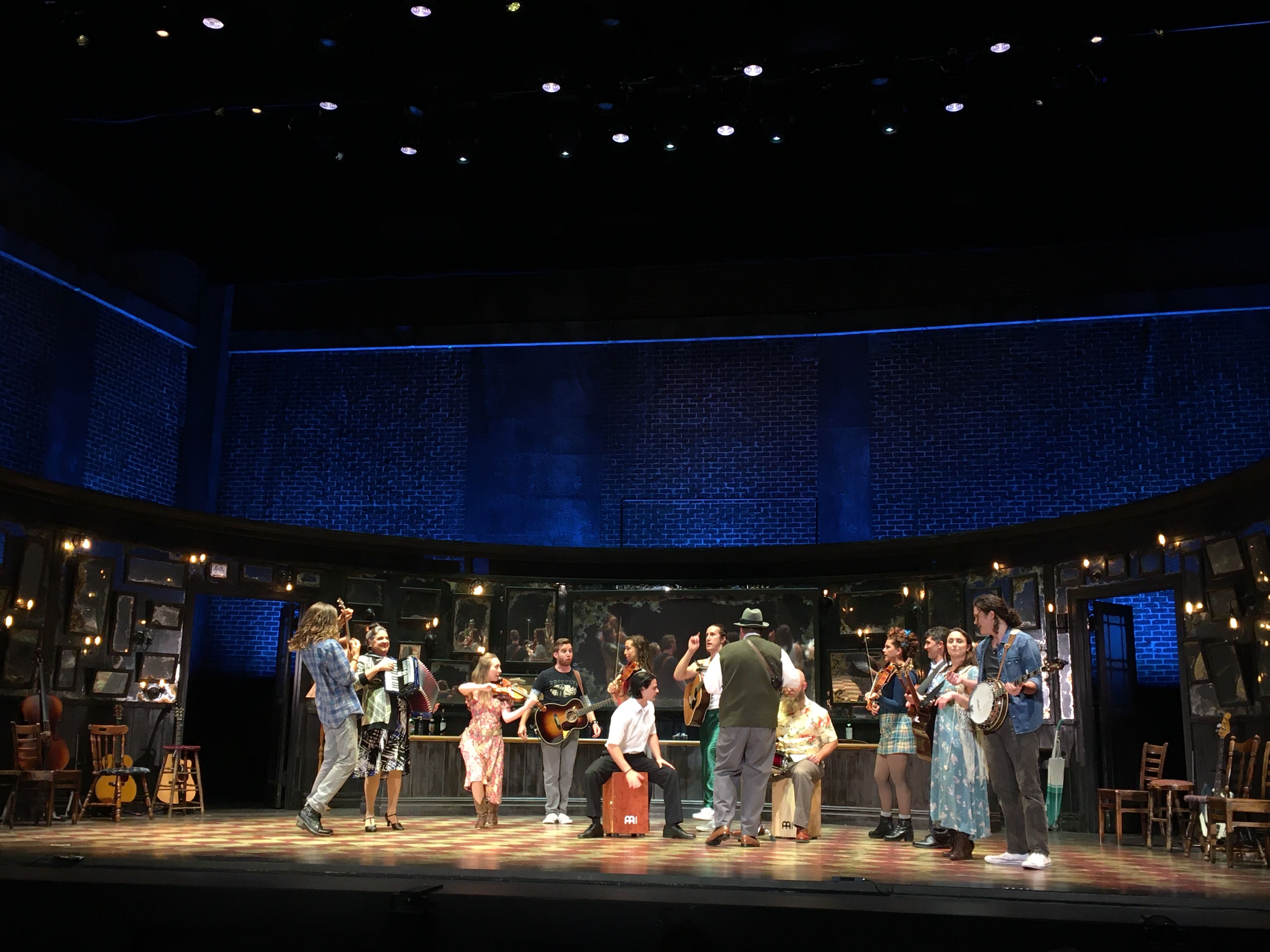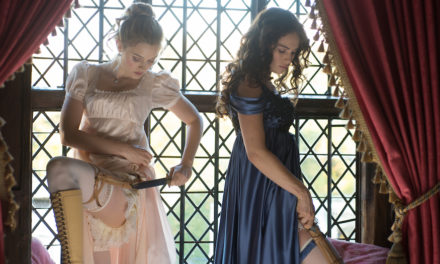This weekend, Emory’s Schwartz Center for the Performing Arts was graced with the presence of the ordinary.
That’s what Monica Bill Barnes and Company are all about. For this past weekend’s performance of “Things you can’t do on the radio,” Barnes transformed dance from the customary pirouettes and leaps to comprising familiar activities such as, among much else, smoking a cigarette, spritzing close to an entire bottle of hairspray and tossing confetti into the air.
New York-based Monica Bill Barnes and Company’s website reads that their mission is to celebrate the “individuality, humor and the innate theatricality of everyday life.” That mission was certainly clear in “Things you can’t do on the radio,” a performance which featured a mere two dancers: Barnes herself and her fellow Company member Anna Bass.
Barnes launched the performance by presenting film footage of herself and Bass, clad in down coats and sneakers, lugging a puppet theater across the entire Emory campus to the tune of the immortal Star Wars theme.
The video tracked the pair as they headed down Asbury Circle, past Cox Bridge and into the Schwartz Center. As the screen faded to black, the pair appeared in the flesh – still in their down coats and sneakers – and lugged the puppet theater onto the stage.
The next hour and a half elaborated on the notion of making an ordinary process extraordinary. The audience watched Barnes and Bass hook up their own lights, vacuum up any debris lingering onstage and prepare themselves to dance.
From the moment their movement began, it was unmistakable that both Barnes and Bass were extremely talented artists. Though the vast majority of their movement was confined to a small space – at times, a chair, or sometimes one spot on the floor – there was absolutely no shortage of activity, as they moved their arms, legs, heads and bodies at near-superhuman speeds. And no matter what they were doing – stamping their feet on the floor or nodding their heads to the beat of the music – there was something inherently beautiful about the impeccable, down-to-the-letter unison of their movement.
Ultimately, though, “Things you can’t do on the radio” appeared to be a one-trick pony. Numerous times throughout the performance, one of the two would begin a routine, only to stop mid-combination and “work out the piece” with one another. At first, this sequence serves as a clever tactic to display the awkwardness of showmanship and poke a little fun at the dancers themselves. But in the end, the joke is repeated long after its novelty wears off.
And frankly, Barnes and Bass are far more captivating as dancers than they are during these breaking-the-fourth-wall moments. Each movement they performed was so charged with energy, life and meaning that they didn’t need to throw in these additional “acting” moments to convey their message. The two are exceptionally skilled at incorporating gestures, facial expressions and mannerisms into their dance movements. It’s disappointing when they sacrifice that incredible mélange of dance and theatricality to melodramatize their movement.
Similarly, the second act began with the two dancers standing on a kitchen table, staring ominously at the audience. They stared for a long time, and when they finally moved, it was only by a millimeter. But little by little, they moved several millimeters, playing with the anticipation of what would happen next: would there be a release where they suddenly moved faster? Would they knock over one of the dinner plates that were arranged on the table?
When they did, at long last, knock over one of the plates, their lack of reaction almost rendered the moment anticlimactic. But it was hard to tell what their lack of reaction was meant to incite: apprehension, confusion, discomfort or ease. No matter what, it was all about defying the audience’s expectations.
Barnes is clearly a fan of playing with those expectations. Expectations of what dance can encompass, expectations of what kind of music, costumes and props fit with what kind of dance.
In that vein, her movement was most effective when using those factors deliberately to influence the meaning: working with the music in unexpected ways, ignoring it altogether or having odd costumes because they serve a surprising purpose, not just for the sake of being odd. At its best, Barnes’ choreography was able to look at commonplace aspects of life and theatre from an additional perspective.
If Barnes’ mission was, in fact, to showcase the drama of routine, perhaps she succeeded in that endeavor. An entire audience did indeed watch, and love, as she and Bass worked through the daily activities of dressing, eating, cleaning and walking. And watching the everyday, it turns out, can be a theatre-worthy experience in its own right.
– By Emelia Fredlick
The Emory Wheel was founded in 1919 and is currently the only independent, student-run newspaper of Emory University. The Wheel publishes weekly on Wednesdays during the academic year, except during University holidays and scheduled publication intermissions.
The Wheel is financially and editorially independent from the University. All of its content is generated by the Wheel’s more than 100 student staff members and contributing writers, and its printing costs are covered by profits from self-generated advertising sales.





